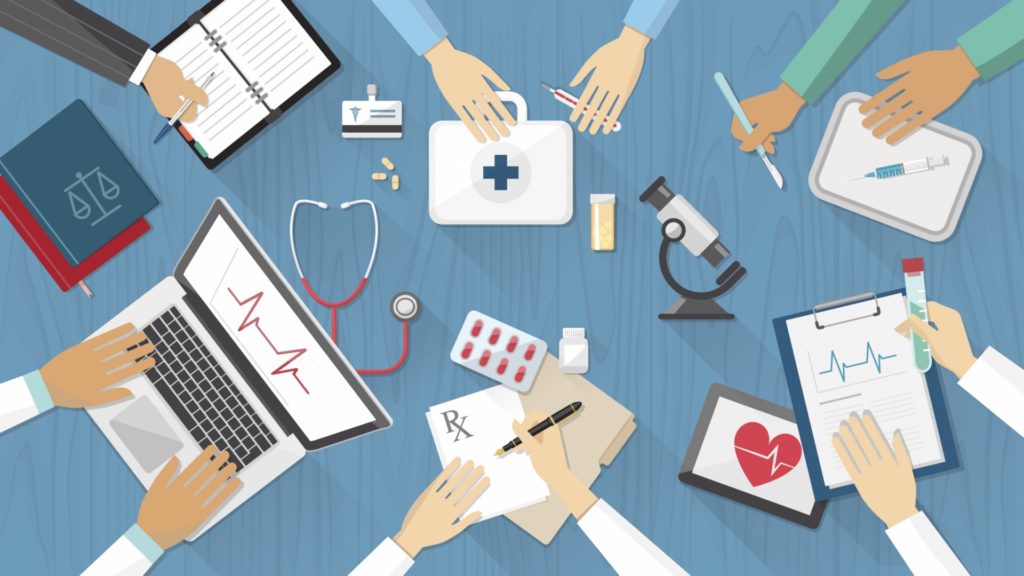One of the most talked about topics in healthcare is patient engagement. Patient’s who are engaged with their healthcare decision-making and care tend to be healthier and have more positive relationships with their providers.
Patient engagement involves many different aspects of a patient’s care but ultimately boils down to how involved a patient is with their medical provider, how accountable they are to their personal health, and how they are interacting with a practice on a day-to-day basis.
This term is discussed at length in the medical community due to its effect on multiple aspects of a practice including revenue, patient outcomes, and patient satisfaction.
For a new or small medical practice, making sure your patients stay active in their care is an instrumental part of running a successful business.
Discover the power of patient engagement in healthcare with 5 key strategies. Learn how patient portals, payment plans, text reminders, mobile communication, and patient education can boost connections and enhance success at your practice.
Tools for Patient Engagement:
1) Patient Portal
Probably one of the most widely recognized tools of patient engagement is the patient portal. The patient portal acts as a central hub that patients can access any time they are seeking to engage in their personal health or take more control of their payments.
The patient portal offers many tools within itself that increase the level at which a patient can access their Personal Health Information (PHI) as well as schedule appointments and contact their physician.
Patient portals raise the bar for patient-provider relationships by giving patients a simple and secure way to view their visit and payment history and make full or partial payments online.
Patient portals offer customizable features to meet specific patient needs with tailored educational resources and wellness materials. This enables practices to personalize the patient’s experience for a more engaging and effective interaction.
Patient portals facilitate seamless communication between patients and healthcare providers. Through secure messaging features, patients can easily contact their providers, ask questions, and request prescription refills. Providers can respond promptly, fostering a sense of partnership and empowering patients to take an active role in their healthcare. Communication threads are archived for continuity of care and documentation. Incorporating convenient online tools can improve patient engagement outcomes and help them manage their care and patient responsibilities.
2) Payment Plans
Patients who avoid their providers because of past-due medical bills or the uncertain cost of their medical care can now address their care with financial confidence.
Not only does the patient portal help patients to understand the details of their bill, increasing engagement, but payment plans do this as well. For patients who have larger bills, they can often feel intimidated by how impossible medical care can seem to cost.
Payment plans allow patients to manage their medical expenses without facing overwhelming financial burdens. By spreading the cost of treatment out over time, patients can avoid the stress and anxiety associated with large, unexpected bills.
This allows patients to focus on their health and well-being, instead of worrying about how to afford necessary medical care. Ultimately, reduced financial stress contributes to improved patient satisfaction and better health outcomes.
Offering payment plans empowers patients to take control of their healthcare finances and make informed decisions about their treatment.
By providing flexible payment options that fit within their budget, healthcare providers enable patients to prioritize their health without compromising their financial stability.
Medical billing software like CollaborateMD allow providers to offer patient-directed payment plans. These plans allow patients to determine how to distribute the payment load.
This sense of empowerment motivates patients to make manageable, budget-friendly payments and decrease accounts receivable without the need for collections.
It also encourages them to seek timely medical care, leading to better outcomes and stronger patient-provider relationships. When patients feel a sense of control in managing their healthcare expenses, they become active participants in their own care journey, contributing to overall patient engagement and satisfaction.
3) Appointment Reminders
In the past, providers have experienced high numbers of no-shows for appointments even though they issued a courtesy phone-call reminder to their patients. No-shows impact a practice in a few ways.
One of these ways being that when a patient doesn’t show for their visit, providers miss out on crucial payments for their time. In theory, by this spot being filled, other patients are unable to visit with their provider at that time.
One solution to no-shows and increasing patient engagement is to send automatic appointment reminders. Appointment reminders can be sent by phone, text or email, decreasing the number of missed appointments.
Patients often avoid answering the phone if it is a number they do not recognize or if they are busy. By sending them text and/or email reminders, providers engage the patient no matter what they are doing.
Almost everything patients do on a day-to-day basis is accomplished in the palm of their hand. Mobile communication is one of the top ways to improve patient engagement and develop an in-depth patient-provider relationship.
Mobile communication plays a vital role in telemedicine, allowing patients to access virtual consultations with their healthcare providers from their mobile devices.
Through secure video calls or messaging platforms, patients can receive timely medical advice, diagnosis, and treatment without the need for in-person visits.
Telemedicine integration enhances access to healthcare services, particularly for patients with mobility limitations or those in remote areas. This improved access to care leads to better health outcomes and overall patient satisfaction.
Mobile apps for health monitoring empower patients to actively manage their health and well-being by tracking vital signs, medication adherence, and activity levels.
These apps provide patients with real-time insights into their health status and allow them to share data with their healthcare providers for remote monitoring and personalized care management.
Health monitoring apps promote patient engagement and self-management, enabling individuals to take proactive steps towards achieving their health goals and maintaining optimal wellness.
4) Mobile Communication
Almost everything patients do on a day-to-day basis is accomplished in the palm of their hand. Mobile communication is one of the top ways to improve patient engagement and develop an in-depth patient-provider relationship.
Mobile communication plays a vital role in telemedicine, allowing patients to access virtual consultations with their healthcare providers from their mobile devices.
Through secure video calls or messaging platforms, patients can receive timely medical advice, diagnosis, and treatment without the need for in-person visits.
Telemedicine integration enhances access to healthcare services, particularly for patients with mobility limitations or those in remote areas. This improved access to care leads to better health outcomes and overall patient satisfaction.
Mobile apps for health monitoring empower patients to actively manage their health and well-being by tracking vital signs, medication adherence, and activity levels.
These apps provide patients with real-time insights into their health status and allow them to share data with their healthcare providers for remote monitoring and personalized care management.
Health monitoring apps promote patient engagement and self-management, enabling individuals to take proactive steps towards achieving their health goals and maintaining optimal wellness.
5) Patient Education
In today’s complex healthcare system, an increasing number of patients find themselves struggling to understand medical bills. Complicated billing statements can lead to confusion, frustration, and even financial hardship.
That is why offering clear and automated medical billing statements is vital to ensure that patients have a better understanding of their financial responsibilities.
Price transparency helps patients better understand the charges and costs associated with their medical care.
If patients are given vague or confusing statements, they may inadvertently miss payments or even fail to make them at all. This can lead to financial difficulties for both the patient and the healthcare provider.
Offering clear patient estimates of responsibility at the time of service is also important. It allows patients to plan their finances accordingly and avoid unexpected bills later on.
A clear estimate of the expected costs can help patients to budget effectively and plan for their medical expenses.
Employing strategies like patient portals, flexible payment options, text alerts, mobile interactions, and price transparency can significantly enhance patients’ involvement in their healthcare process.
These approaches do more than merely boost patient outcomes and satisfaction; they also fortify the bonds between patients and their healthcare providers.
The adoption of patient engagement technologies transcends the goal of revenue growth—it fundamentally enriches the quality of care and nurtures a dynamic of cooperation and trust within the practice.




